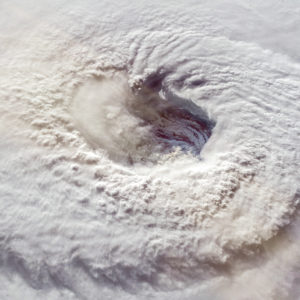For an alternate viewpoint, see “Point: Bold Action Is Needed Before Hurricanes Strike.”
The 2022 hurricane season will be above normal, according to forecasts from Colorado State University’s Phil Klotzbach, the respected student of Bill Gray, who started long-range hurricane forecasts decades ago.
This should be headline news, right? Actually, within some pretty broad limits these types of seasonal forecasts are of only marginal utility. If I lived in a hurricane-prone region (I do), this wouldn’t prompt me to do anything different than any prudent resident normally does in preparation for any season. Nor would the latest forecast from IBM’s Weather.Com, which says pretty much the same thing, and the yet-unreleased version from the Department of Commerce, change my routine.
These kinds of forecasts might also prompt the usual fearmongers to caterwaul about global warming jacking up hurricanes, but tropical meteorologist Ryan Maue has made a career by pointing out there is simply no relationship between the frequency and power of these storms and global warming. His “Accumulated Cyclone Energy” (ACE) index covers every storm detected since satellite coverage became global more than 50 years ago, and its correlation with mean surface temperature hovers near zero.
With regard to an individual storm hitting your house, these forecasts offer little information. There are an average of seven hurricanes each year in the North Atlantic, and most of these don’t even hit the United States. The two current forecasts are for eight and nine hurricanes. Yes, everything else being equal (very dangerous words in science) this would mean the probability of being hit is up — but by an amount so small as to be statistically insignificant (and therefore operationally meaningless).
There’s another problem. Thanks to ever-improving satellite algorithms, we see increasing numbers of storms that would normally have been undetected, owing to small size, short lifetimes and distance from shipping lanes. These storms, called “shorties” by Chris Landsea, the head research scientist for the National Hurricane Center, show no detectable effect on Maue’s ACE index over time.
If you live in a region prone to disruptive weather like hurricanes, tornadoes or river floods, you should have a reliable generator wired into your house circuits by a professional electrician. Also, keep plenty of fuel around, either in the form of propane or no-ethanol gas, which lasts much longer. (Stores nationwide can be found online.) And you probably should run it for a few minutes every month or so, use a synthetic lubricant, and have one of those handy Halo chargers that revive dead batteries instantaneously.
That’s it. That’s my response to any gloom and doom seasonal hurricane forecast.
Also worth noting is that a forecast of low hurricane activity is also pretty useless from an individual viewpoint. There were only six tropical storms and hurricanes in 1915, near the historical low end. But two of them were whoppers, getting named as the 1915 Galveston and New Orleans hurricanes. The year before had only one storm, the least on record.
Nor will any of these forecasts have much federal influence. State and federal emergency planning agencies are fully aware that one monster in a weenie season causes a lot more problems than most weak storms in an active season.
Then there’s simply bad hurricane luck. Although its rank is still debatable because of the lack of satellite coverage, 1933 was an impressive year, especially if you lived in northeastern Mexico along the Texas border. That region was hit by six storms at pretty much the same spot.
The bottom line is to simply be prepared. Whatever is forecast for the entire Atlantic Basin has very little to do with your location and good (or bad) hurricane luck. Test the generator, make sure it is hooked up right, and rest easy.

